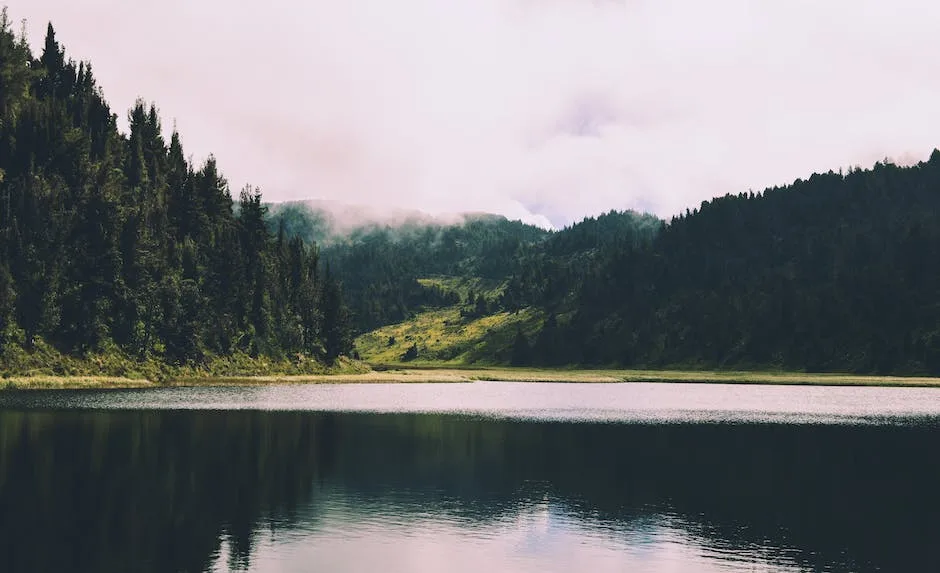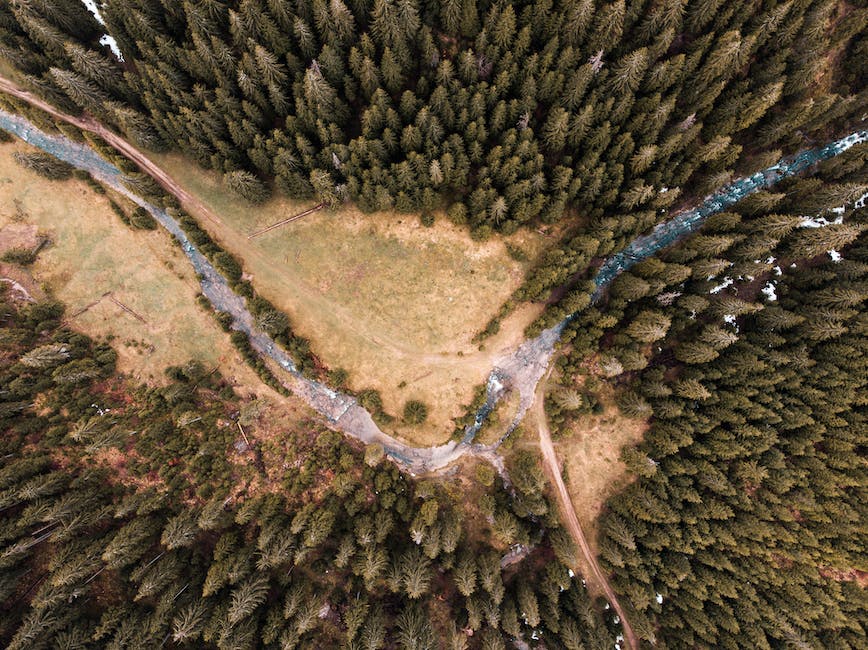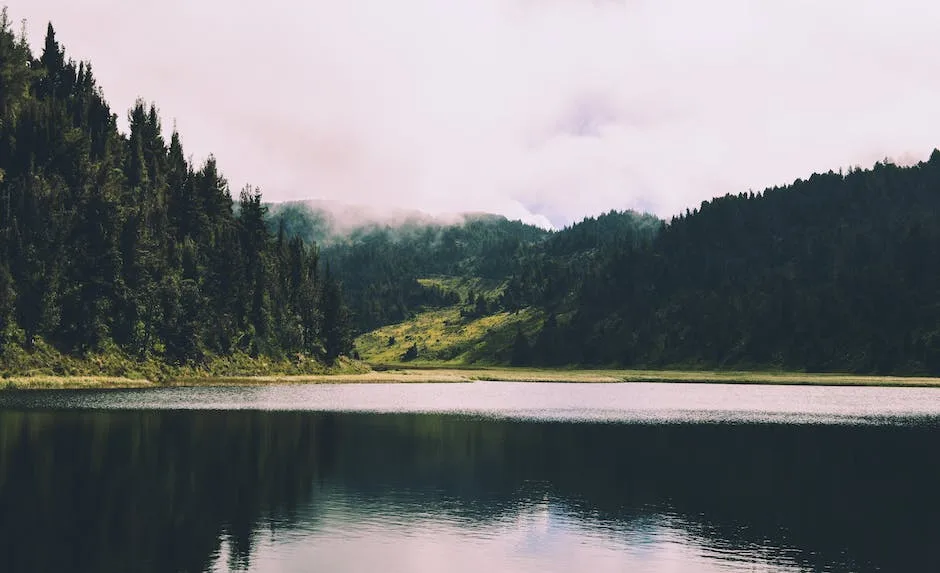Pine trees are an important part of the water cycle. They play a role in thetranspiration process, which is how water vapor moves through the atmosphere.Pine trees also help to regulate the water table and can help prevent groundwater depletion. In addition, pine trees help to protect against soil erosion and can helpabsorb excess water during heavy rainfall events. All of these Pine tree benefitshelp to ensure a healthy water supply for both humans and the environment.
Pine trees are effective at soaking up water because of their deep and extensive root systems. The roots of a pine tree can extend several feet into the ground, which allows the tree to access to a large volume of water. Additionally, the needles of pine trees are covered in a waxy substance that helps shed water and prevents the tree from being saturated.
Do pine trees absorb a lot of water?
Pine trees are known for being drought-tolerant and not needing much water to survive. However, during dry winters or extreme drought, you will need to water mature pine trees to help them thrive.
Most evergreens have a strong aversion to having “wet feet.” This means that they require well-drained soil in order to thrive. Yews, junipers, pines, firs, and most spruces all fall into this category. If you have evergreens in your landscape, make sure that they are planted in an area where the soil drains well.
Do evergreens absorb water through needles
Evergreen trees are known for their ability to retain their leaves (and needles) year-round. However, this also means that they are constantly losing water through their needles in the dry winter air. As a result, they need to have more stored-up water going into the winter season to make up for it.
Cold, dry winds can actually strip water from evergreens faster than their roots can absorb it. This can lead to dehydration and eventually death if not addressed. To prevent this, gardeners should provide evergreens with extra water during the winter months, especially if the weather is particularly dry.
Trees are an important part of the water cycle. Their leaves and needles catch rainwater and break the force of the rain before it hits the ground. Some of the water is absorbed and some evaporates, helping to cool the air. The shade from trees helps keep water cool in streams, rivers, and ponds for cold-water species of fish and other wildlife.
What is the best tree to absorb water?
Red Maple, Ash, Black Gum, White Cedar, and River Birch trees are the best at absorbing water. They have deep root systems that help them to absorb more water than other trees.
These are some of the trees that are known to absorb a lot of water. They are all native to North America and are hardy in a wide range of climates. These trees are all great choices for landscaping, and can help to keep your property well-hydrated.
What is pine trees good for?
Pine trees are one of the best aids against soil erosion because their roots work to hold the soil in place. Pine trees are a popular choice for erosion control because they are incredibly hardy and can survive and thrive in most any soil conditions.
An established pine’s roots absorb substantial amounts of nutrients, leaving the surrounding soil depleted. This can be a problem for other plants that need those nutrients to grow.
Do pine needles filter water
The sapwood of nonflowering trees contains straw-like conduits called xylem, which draw water up through the tree’s trunk and branches. Xylem conduits are interconnected via thin membranes that act as natural sieves, filtering out bubbles from water and sap. This process helps keep the tree’s interior healthy and free of diseases.
Although evergreens continue to lose water vapor through their leaves during the cold months, they are still able to replace the water by pulling it up from the roots. The roots are not able to absorb water to supply it to the leaves when the ground is frozen, but the leaves are still able to replace the water.
How do pine needles reduce water loss?
Pine trees have a number of adaptations that help them survive in dry habitats. The needle-like structure of their leaves helps reduce evaporation of water, and their pine needles consist of a thick cuticle and waxy coating which help prevent loss of water. Additionally, the sunken stomata in their epidermal layers helps to decrease water loss during transpiration.
Eucalyptus trees are considered as a natural purifier of water because they help to reduce the amount of water in the ground and also help to keep the water bodies clean.
Do trees soak up groundwater
Forests play an important role in water cycle and are very good at allowing water to enter the ground and recharge the water table. The soil, shade and organic materials under trees help hold moisture so it can be absorbed and replenish groundwater levels. This is an important process that helps maintain water supply in dry periods and improve water quality by filtering out pollutants.
The roots of trees grow deep into the ground, allowing them to absorb more water than do grasses. Additionally, the leaves of trees transpire water, which results in drier streams.
What soaks up water in yard?
If your yard is swampy, cover the ground with water-absorbing plants. Sod and grass seeds are some of the best ways to fix swampy areas in a yard. If you just finished amending an area with new topsoil, complete it with a fresh covering.
Ring porous trees have a higher rate of water movement than diffuse porous trees, but both types of trees can absorb large amounts of water. Pine trees have a lower rate of water absorption, but they can still take in a significant amount of water each day. Of all the water that plants absorb, only a small percentage is used for growth; most of the water is lost through evaporation and transpiration.
What ground cover soaks up water
Ferns are an excellent choice for a ground cover because they have a lot of foliage which filters water, and they also have dense root systems. Some varieties of ferns to consider are ostrich fern (Matteuccia pennsylvanica), painted fern (Athyrium nipponicum), and lady fern (Athyrium filix-femina).
The cottonwood tree is the fastest growing native tree in North America. Only some of the water in a plant becomes growth, 1-10% at most, so plants that grow faster also use a lot more water. A single cottonwood tree can consume anywhere between 50 and 200 gallons of water each day.
How much water does a pine tree drink a day
Answer on how much water does a pine tree need daily While measuring the trunk take the diameter at 1.3 meter above the ground pine tree need 60-130 liter of water everyday.
Evergreen trees are great for blocking noise and wind. They are also deep-rooted and can tolerate little to no water. Cypress trees are part of the evergreen family and make great windbreakers.
What are the disadvantages of pine trees
Though pine trees are popular for their aesthetic value, there are some notable disadvantages to consider as well. For one, needles and cones can drop frequently, which can create a messy landscape. Additionally, pine trees exude a sticky sap that can be difficult to remove from clothing and shoes. Finally, while most pine trees can grow in poor soils with low levels of nutrients, they need an acidic soil pH below 70 to truly thrive.
Pine is a softwood that is prone to scratches and dents. However, it develops a nice, rustic patina from age and use, and it resists shrinking and swelling.
Do pine trees purify the air
Pine trees are more than just a pretty sight. They are known to purify the air around us and their scent is helpful in reducing inflammation for people with asthma or allergies. When we are exposed to the fresh, clean air that pine trees provide, we not only feel better physically, but emotionally and mentally as well.
When you are deciding how to plant a tree, you have to think about how far below ground its growth might extend. This is especially important if your tree is planted close to your house. While it’s always wise to plant trees about 15 feet away from your house, sometimes you are in a situation where you purchased a home with existing mature trees. In these cases, you need to be aware of the potential for the roots to grow under your foundation and potentially cause damage.
Warp Up
Yes, pine trees absorb water from the ground through their roots. They use this water to help them grow and stay healthy.
In conclusion, it is evident that pine trees do play a role in absorbing water from the soil. However, more research is needed to investigate the long-term effects of pine trees on the water table.
Mark Hoffman is a dedicated arborist and tree care specialist with over a decade of experience. His love for trees began when he visited Yosemite National Park as a teenager and was awestruck by the giant sequoias. Mark pursued his passion by studying forestry at Michigan Technological University, where he earned a Bachelor of Science degree.
Since then, he has worked tirelessly in the field of arboriculture, helping to preserve and protect trees in his community. His expertise and dedication have made him a respected leader in the industry and a valuable resource for anyone seeking advice on tree care.
